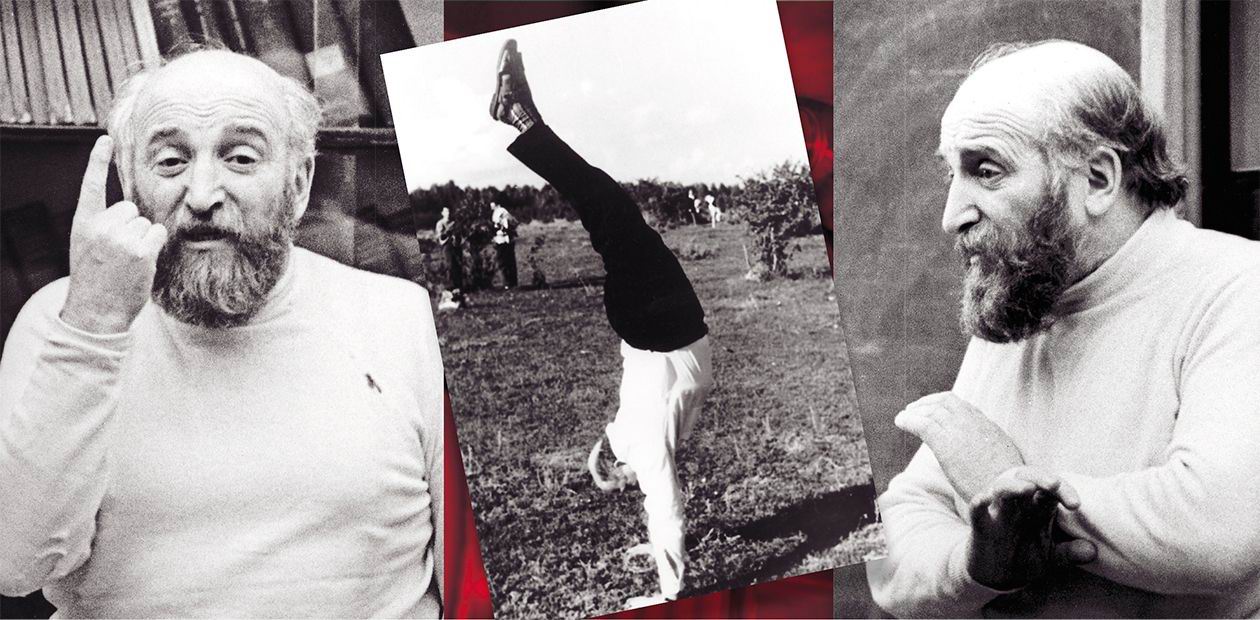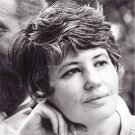Budker in Four Perspectives
Centenary of the Birth of Academician Gersh I. Budker
In the spring of 2018, scientific community celebrated the centenary of the birth of the outstanding Soviet physicist, Academician Gersh Itskovich Budker (called informally Andrei Mikhailovich), the organizer and first director of the Institute of Nuclear Physics in Novosibirsk. Fate granted him a little over thirty years in science, but, according to his student Iosif Khriplovich, now Corresponding Member of the Russian Academy of Sciences, it was more than enough. “A man of passion, Budker had lived, by his nearly sixty years of age, in fact several lives. A refined physicist, a vibrant inventor, the creator and leader of a great research institute—his accomplishments in each of these occupations would be more than enough for a rich, eventful life.” Budker’s scientific and organizational achievements, as well as his most extraordinary personality, have become the subject of dozens of publications. However, today we present to our readers one of the most vivid and rare testimonies—the memoirs written by Alla Melik-Pashayeva, a talented TV journalist as well as Budker’s wife. The text of the memoirs, edited for length, is based on Melik-Pashayeva’s book A. M. Budker in Four Perspectives (1988). The editors allowed themselves to add some memoirs of Academician Budker’s students and colleagues, his partners in teamwork
The word ‘impossible’ was not in his dictionary. The harder was the task, the more it fascinated him. He found solutions that were always original, unpredictable, simple, and efficient. Original, meaning that only he himself could have come up with such a solution; unpredictable, because everyone kept wondering how he could do it in such a way; simple, because he always found the most direct path to the goal, and this path looked obvious only after he had shown it; and efficient, because he successfully transformed his ideas into reality. I mean not only physical or engineering ideas; I also think about human relationships, work organization and leadership in research. He did it all differently, not like anyone else—he did it better, faster and in a more cost-effective and elegant way...
Prof. Victor F. Weisskopf, Massachusetts Institute of Technology
Melik-Pashayeva’s memoirs are based on her book
A. M. Budker in Four Perspectives, 1988 (published here in an abridged version)
Physicists worldwide knew Andrei Mikhailovich Budker as the author of remarkable works on nuclear reactors, accelerators, plasma physics, and high-energy particle physics. Moreover—they knew him as an immensely ingenious, witty person. I had the luck to see him at home day after day during the last eight years of his life—to see a cheerful man, sparkling and exhausted, desperate, open to people and withdrawn into himself, an ageless man, a wise and gentle father, a brave man heroically fighting his disease... If it is true that life mirrors itself in a tiniest moment, like ocean in a drop of water, then there is hope to collect bits and pieces of his life, as they are kept in the memories of other people, as they are kept in my memory—and put these shards together to make a mirror.
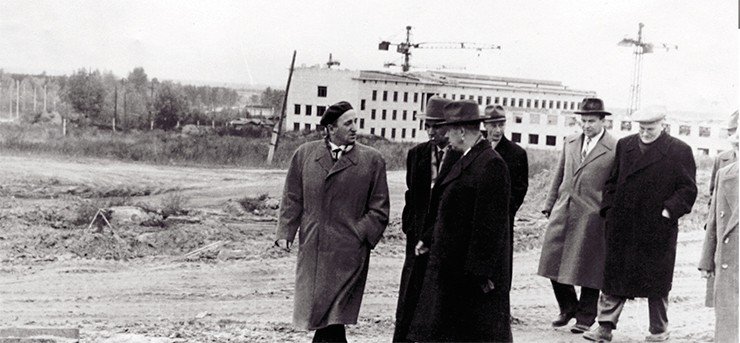
So, Budker in four perspectives.
Perspective one. With himself…
Andrei Mikhailovich recounted his life to me, day by day. Perhaps, ‘recounted’ is not the best word. He showed his life to me, word-painted it, shot it up and mounted—and did it like a genuine documentary-maker. He could not be a director of his life’s story or abandon his past; his only power over the continuing tape of fate was to rearrange or reproduce events recorded by life.
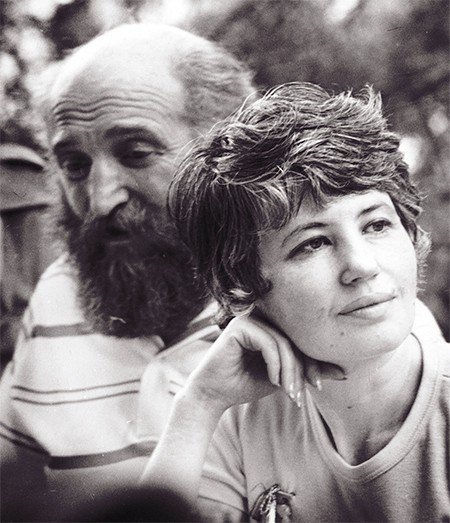 I clearly saw what I couldn’t have seen, moreover—what Andrei Mikhailovich himself couldn’t have seen: a small Ukrainian village in the midst of the civil war; a mill over a river, where his father labored; a hurried, desperate firefight between the reds and the followers of Symon Petliura... His father’s strong body collapsed under a hail of petliurists’ bullets. Awkwardly he fell sideways into the river. Mother, standing on the river bank (everything happened before her eyes), stared for a long time at the waters, watching them calmed down. When the mill’s reflection finally reappeared in the water mirror, she strolled away aimlessly, unaware yet that she had become a nineteen-year-old widow with a two-week-old baby.
I clearly saw what I couldn’t have seen, moreover—what Andrei Mikhailovich himself couldn’t have seen: a small Ukrainian village in the midst of the civil war; a mill over a river, where his father labored; a hurried, desperate firefight between the reds and the followers of Symon Petliura... His father’s strong body collapsed under a hail of petliurists’ bullets. Awkwardly he fell sideways into the river. Mother, standing on the river bank (everything happened before her eyes), stared for a long time at the waters, watching them calmed down. When the mill’s reflection finally reappeared in the water mirror, she strolled away aimlessly, unaware yet that she had become a nineteen-year-old widow with a two-week-old baby.
In June 1976, Andrei Mikhailovich took me and his youngest son to Vinnitsa to celebrate the fortieth anniversary of his graduation from school. He saw his childhood town lying in the sun, in green leaves and flowers; he saw the Southern Bug River and a blind-eyed hut, sunk into the earth, which survived miraculously on the outskirts of the town.
ACADEMICIAN SPARTAK T. BELYAEV: “A SHORT YET VIBRANT LIFE” Andrei Mikhailovich Budker is a unique figure in our science. An original genius, a scientist who clearly did not fit into recognized scientific fields and schools, he lived a short yet vibrant life and left behind himself many fundamental scientific ideas and results.This, or something like this, is what historians of science are and will be writing about Budker, and this is all true. However, for those who worked with him, who knew him on hectic working days and in the predicament of life, Andrei Mikhailovich (or simply A. M.) was, first and foremost, an original and distinctive personality. Others were dazzled by the uncanonicity of his garishness and multivalence. A symbiosis of a sage and an active, stirring man with traits of a naïve, earthly provincial. Deep inner conscientiousness and decency lived in him side by side with the slyness of a balagan magician. But who knows, maybe, without this complexity and disheveledness, A. M. would not have had his original and paradoxical thinking. Bright talents often go hand-in-hand with quirks of nature. And so very often the latter outweigh the former in the public eye, making it difficult, in every way possible, for the talent to reveal itself. Therefore, glace iconography would be out of place and only do harm in the gallery of outstanding scientists. A.M. Budker’s life is exciting and instructive from this perspective as well.
It seems that nobody lived in it after them: there was only one room under a sagging roof, damp, uncomfortable... But for him, in his memories, everything seemed cozy: a floor mat woven from motley rags, an unpainted table, one stool, a narrow bed in the corner by the window... A photograph of his father stood in a conspicuous place: a slim young man in a dark coat and a top hat, holding a cane—everything was borrowed from the photographer. He had spent so much time staring at the photo that he remembered it for the rest of his life, down to the minutest details. The older he got, the more often he found something painfully familiar in his father’s appearance. But what?! One day he knew it: his father’s hands, holding a cane, were the hands of his eldest son Volodya.
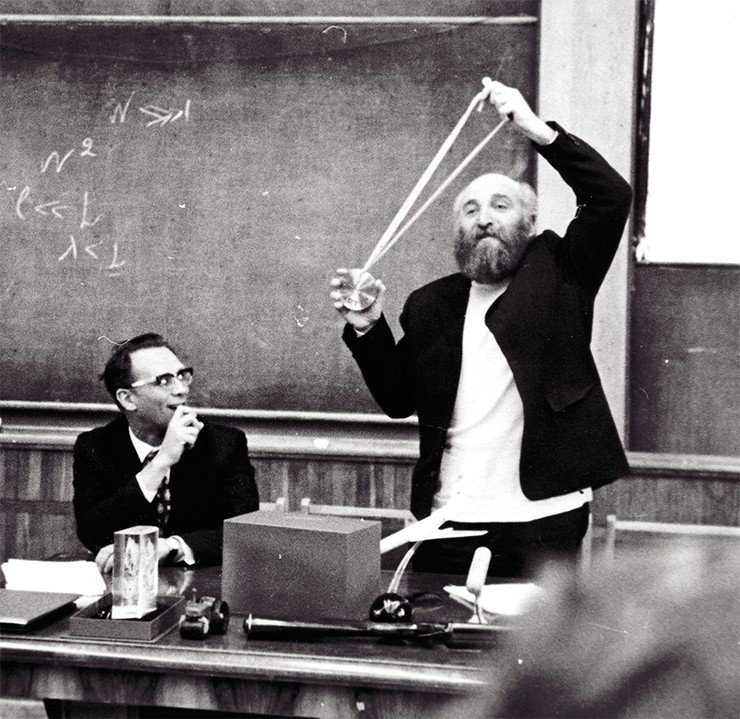
His mother was a kind, hard-working and completely illiterate woman. She made an X-mark instead of a signature. By the end of her life, she learned to read and read a lot, greedily, reveling in the passions and sufferings described so thoroughly and colorfully by Maupassant, Flaubert, Stendhal.
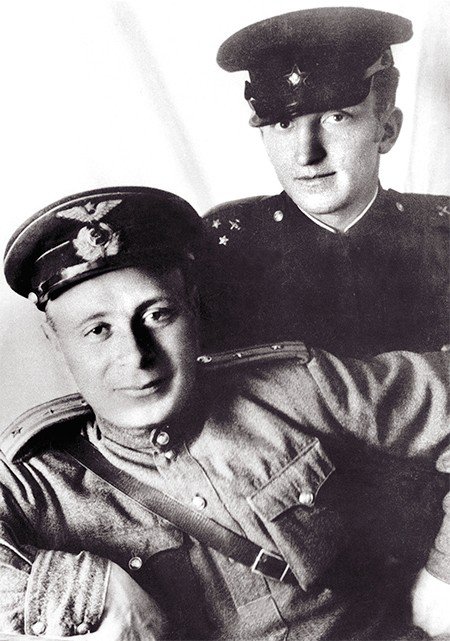 Her whole existence, in the best years, split between two unequal halves: one was a constant struggle for survival; the other, the relentless fear for the bulbous-headed, restless, quick-as-silver Es’ka (his home name as a child). Still a small boy, he knew by heart—through the efforts of his pious relatives—complete chapters from the Bible and the Talmud. They would put him on a chair in the middle of the room, and the eight-year-old sage debated fiercely with white-haired elders... Perhaps, it was since then that he recognized no unshakable authorities in the face of truth?..
Her whole existence, in the best years, split between two unequal halves: one was a constant struggle for survival; the other, the relentless fear for the bulbous-headed, restless, quick-as-silver Es’ka (his home name as a child). Still a small boy, he knew by heart—through the efforts of his pious relatives—complete chapters from the Bible and the Talmud. They would put him on a chair in the middle of the room, and the eight-year-old sage debated fiercely with white-haired elders... Perhaps, it was since then that he recognized no unshakable authorities in the face of truth?..
In the hungry 1920s, he and his mother almost died. Salvation came from a red commander who billeted in their house: stunned by the extraordinary abilities and quick mind of the starveling boy, he gave them a sack of millet when he left. His mother managed to eke out this stock during the long, hungry winter. Since then, Andrei had never eaten millet. Well, except during the war... <...>
After the ninth grade, Andrei went to Moscow to take entrance exams at Moscow State University but did not pass and came back home, to his Ninth School. Teachers were lacking, and he got an offer to teach physics and mathematics in his own and in the parallel class. School bullies maintained discipline at his lessons—everyone took vital interest in Es’ka’s earnings: when he got money, he shared it generously with his mates.
In 1935, the red-haired, shaggy, impudent-looking lad appeared again in Moscow, in Maryina Roshcha.
It was known that Budker was a most enthusiastic fan of aviation. Once an old, long-decommissioned training airplane landed at his house in Akademgorodok, in a vegetable garden. The plane was a gift from the district commander—he and his officers paid a guest visit to the scientists.Two hours had barely passed when breathless officers rushed in, “The commander ordered the wings to be removed. Or Budker will fly, he said, I know him!”
...Why did he choose to go to university, to do science? In those days, youngsters raved about aviation or went willingly to transportation and highway engineering colleges. Few people took interest in science as it meant a low-paying job in the future. The word ‘physics’ bore little significance. However, as early as in the ninth grade, he—the best of the best—knew his own mind and chose to go to university although this was out of vogue; there was not even a competition... Was it because the Latin word universum means “world as a whole”? Yes, he wanted to know everything. Although a university degree promised him nothing but a career of a secondary school teacher, it offered him the whole world!
...I feel as if I could see Moscow in the autumn of 1936: classrooms in the old university building in the Mokhovaya Street, and yesterday’s schoolchildren, who found themselves at the very first lecture in an fathomless land where such concepts as “big” and “small” did not exist, only “greater than” and “less than.” There, one did not solve ready-made problems but had to think independently.
Very strong students enrolled that year: out of the 100–120 students, at least 20–a huge percentage!—later became doctors of science, members of the academy and reputable physicists in their fields. And how many smart lads were killed at the war, before they could have become famous!
ACADEMICIAN ARKADY B. MIGDAL: PHYSICIST BY THE GRACE OF GOD In 1946, after demobilization, Andrei called me and asked for a job. We met at my house. At first I asked him a few questions about science, and it turned out that he knew very little or, rather, did not remember much after the army. But his ignorance took an unusual form. When I asked him what spin the deuton had, he replied, “It’s obvious—either zero or one.” Of course, this response was better than “I don’t know” or a memorized correct answer. Then I asked him what he had been doing in the army, and it turned out that he came up with several inventions that were put to use in the antiaircraft unit where he served. I realized that this man deserved to be hired.I am proud that I was able to see in this provincial young man—Andrei was 28 years old—an extraordinary way of thinking and a grand scale and scope of ideas. Grandeur—one of his main personality traits—was everywhere about him, even in those days. He did not change his unusual name Gersh Itskovich to, say, Grigory Isaakovich; instead, as a man of grander, he called himself Andrei Mikhailovich...
We gathered together in our theorists’ room, No. 37, twice a week. We argued fiercely, shouting like mad. I tried to understand a word in this unspeakable rumpus. One day, when debating a new idea, Budker, as usual, would not let anyone open their mouth. He sent me into a rage, and I ushered him out. But in a minute, he stuck his head in through the door and shouted, outcrying the disputants, how to do it. I burst out laughing: this impudent joker had it right again!
His most amazing trait, which put him on top of the world in his field, was his inexhaustible engineering fantasy in physics. We, theoretical physicists, far from technology and lacking the engineering vein that was so strong in Andrei, treated his projects at first as pure science fiction, but then, to our astonishment, they began to live real life. It was one of his most remarkable traits—being able to fantasize, but in such a way that his fantasies came true.
When we all got involved, at Kurchatov’s suggestion, with the problem of controlled thermonuclear reaction, Andrei would come almost every morning with new ideas, which we discussed. By that time, his extraordinary ingenuity in physics had grown mature. I remember him one morning after a sleepless night; he told us about magnetic traps he had just invented. The words “ingenuity in physics” call for clarification. Andrei never confined himself to an idea alone. He would tackle the problem at all fronts, with the entire arsenal of theoretical physics: he found integrals of motion, solved kinetic equations, checked stability. A comprehensive theoretical study of engineering and physical ideas lay at the core of his main works.
Another amazing thing about him: he knew perfectly well all the capabilities of technology although he had mastered it, like physics, from experience rather than from books. Otherwise, his unrestrained fantasy would have taken him too far away from reality.
Once Andrei began his lecture with the words, “Physics is such a beauty.” And the beauty treated him graciously. He was a born physicist, not an experimenter, not a theoretician, but a Physicist with a capital P.
A sturdy and strident provincial, he stood out even among the strongest students. But there was a sphere where no one could ever beat him—in his audacious bragging. What did he brag about? Well, about everything: his broad shoulders, his successes in gymnastics, his proficiency in the newest dance steps. However, his boasts were not at all annoying, maybe because he showed no signs of careerism—he was simply asserting himself, a provincial lion amongst young Moscovian intellectuals, who also went to university at the bidding of the soul. Interestingly, all his life he bragged and boasted not about his main strengths. One could hardly find a more civilian person than Budker. However, in the 1960s—obviously, out of respect for his outstanding scientific achievements—his engineering developments received recognition. A sight to behold—Budker bursting with pride. He talked about it at every occasion, appropriate or inappropriate. But he never boasted about his academic title.
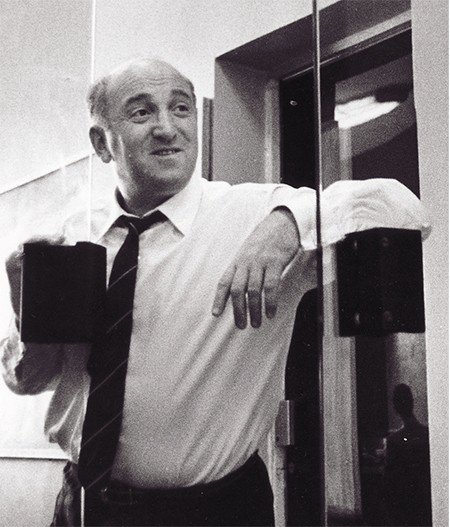 Budker, it seems, got reprimands everywhere possible. Even from a sports society Nauka. He did gymnastics and received a sports uniform. But, in violation of all rules, he wore it at university lectures. The reason was obvious: his scholarship was about twenty rubles in today’s money.* He got married as early as in his third year of studies and impudently showed up at the university once a month, on the day when students received their scholarship money. He worked to support his family, doing all possible jobs, even the then fashionable dancing. Indeed, he was an excellent dancer.
Budker, it seems, got reprimands everywhere possible. Even from a sports society Nauka. He did gymnastics and received a sports uniform. But, in violation of all rules, he wore it at university lectures. The reason was obvious: his scholarship was about twenty rubles in today’s money.* He got married as early as in his third year of studies and impudently showed up at the university once a month, on the day when students received their scholarship money. He worked to support his family, doing all possible jobs, even the then fashionable dancing. Indeed, he was an excellent dancer.
...One day, many years later, he was summoned to Moscow. After an exhausting, stressful meeting with very important persons, he sank tiredly into the front seat of a black Volga, which was sent for him from the academy’s garage, without looking immediately, as he usually did, at the driver behind the wheel. But when he finally took a look... “Hey, wait!.. Don’t you play the piano?”
All the forty minutes they were driving, they talked passionately, interrupting each other, recalling their young days, happy and hungry, when a red-haired dance teacher and his dashing, vibrant tapper—a black-eyed Greek, Semerdzhiev by name—were sneaking around in search of money.
“Unbelievable,” the driver Semerdzhiev said pensively, as if not trusting himself, “when you went to arrange your dance lessons, you put on my coat (you didn’t have one) and wore slippers on bare feet. And now you are an academician...” <...>
...It was the last, fifth year of university studies. On April 1, 1941, he performed an unthinkable dance under the windows of a maternity clinic, not far from their university campus in the Stromynka Street: on that day, his first son was born.
He took his last state exam on June 23. Straight from the classroom, Budker rushed to the Komsomol committee—he thought a Komsomol ticket would make him more eligible to go to war as a volunteer <...>
Thirty years later, on May 9—the Victory Day, Andrei Mikhailovich would recant a story to his youngest son, and this story would become part of the family archives under the title How Dad Was a Deserter. It was a story of a yesterday’s student who went to war and got, instead of a regular unit, into one of the Moscow militia units. The commander—a tired, gray-haired man, a career officer—soon grew fed up with the noisy, red-headed rookie, who kept getting in his way, asking loads of questions and demanding a weapon immediately...
One hot July day, an overweight, heavily breathing man showed up in the unit, constantly wiping sweat from his forehead: a military representative of a defense plant was looking urgently for the deserter Budker!
It turned out that a few months before the war, Andrei, as a man with family, had gotten a postgraduate work assignment not to a secondary school but to a plant near Moscow, to work as a flaw detector. On the very first day of the war, the plant became a defense enterprise, and the flaw detector Budker, a graduate of Moscow University, became a very rare specialist in metal quality control.
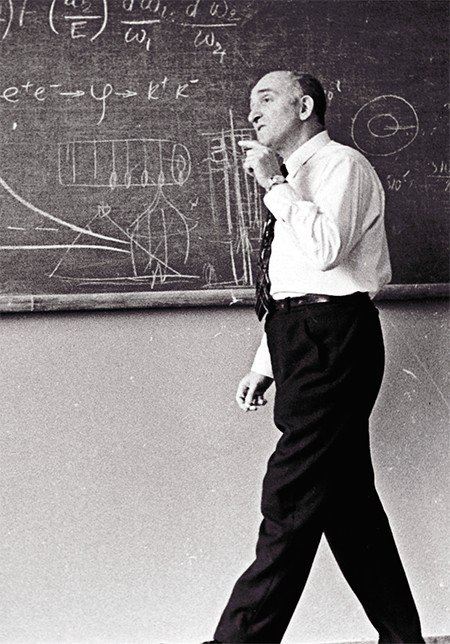 God only knows how this military man managed to find him in the bustle and confusion of the first days of the war. He berated Budker fiercely in public and threw a terrible accusation at him: a deserter. And an unexpected thing happened—the exhausted commander burst out: “A deserter, my foot! He’s here to fight, driving me mad with his damned questions! And you call him ‘a deserter’!”
God only knows how this military man managed to find him in the bustle and confusion of the first days of the war. He berated Budker fiercely in public and threw a terrible accusation at him: a deserter. And an unexpected thing happened—the exhausted commander burst out: “A deserter, my foot! He’s here to fight, driving me mad with his damned questions! And you call him ‘a deserter’!”
...Thirty years later, when telling this story to his son, Andrei Mikhailovich still wondered who was right—the volunteer rushing from rear to hell, or the military representative who needed a specialist to work in the rear.<...>
In the early 1945, they sent him to Moscow to a conference of military inventors. The commander of the field unit, where he made his first invention, called his device AMB, meaning Andrei Mikhailovich Budker.
It was winter in Moscow, but air smelled of spring, of the coming victorious spring. In the Gorky Street, “at Eliseeff’s,” as Muscovites said in the manner of the old days, they opened a commercial store, without ration cards: a piece of cake cost fifty rubles; an ice-cream, twenty-five.
Budker squandered away “at Eliseeff’s” a substantial part of his money, which had been of no use to him at the front. He decided to eat properly before an important visit—he was about to take Lev Landau’s Theoretical Minimum, and his examiner was Landau himself.
When he came to Landau’s house, they escorted him somewhere at the first floor, and he sunk clumsily into a low, leather-covered chair. It felt awfully uncomfortable.
The homeowner bounded into the room and introduced himself: “Lev Davidovich.” Budker immediately forgot his name and addressed the professor in a military manner: “Comrade Doctor.” Landau was annoyed. During the conversation, he repeatedly said his name. All in vain—Budker, who had a phenomenal memory, was unable to memorize two words—as if they dropped down a bottomless pit.
Landau gave him a task to take some integral and went out. And just then his torments began: the cakes he had gorged over with childish greed made themselves felt. His eyes clouded, sweat beading on his brow; he cursed it all, including the unknown location of rooms in the professor’s house.
He failed the Theoretical Minimum.
He reappeared in Moscow next year, wearing the same military uniform yet without the shoulder straps. His university mate’s home at once got crowded and noisy. He exclaimed, “I need a job and a flat!” His mate promised to think about it: maybe he would find something in the coming months.
“Months?!” Budker was genuinely amazed, “I need it now: my wife is sitting at the station with kids and stuff!” <...>
Perspective two: with science…
A chance sealed his fate. When he found himself in Moscow in 1946, he came to the university campus in the Stromynka Street. Someone on campus wised him up that he should find that institution where they worked on some tricky problems and were in terrible need of physicists. <...>
The works on termoyad (Russian slang word for thermonuclear fusion) began in 1951. Physicists were certain that they would solve this problem right away. Budker was assigned to regulate the future thermonuclear reactor so that it would not accelerate too much and get out of control. Later he said, “This assignment reminds me now of a story about how someone wanted to invent a perpetuum mobile and took a patent so that it would not accelerate to infinite speeds...”After the first unsuccessful assault on the problem, scientists began to systematically accumulate knowledge about the properties of plasma, a matter of incredible sensitivity. The naïve optimism to take the problem with a cavalry swoop, when it seemed, just a little more effort and “termoyad will flow like rain” (these are words from a song that thermonuclear physicists used to sing to the guitar), gave way to bitter sobriety.
Since the late 1950s, all the efforts were focused on the study of plasma. It was in those years that we realized how complicated the problem was and how far we were from its solution
Right from the start, he was so lucky as to work alongside Igor Kurchatov, Isaak Pomeranchuk, Lev Artsimovich, Mikhail Leontovich, Arkady Migdal. It was an excellent school. A school of maturity. On its doorstep he said goodbye to searches along the path of well-established ideas and took a step into the world of his own daring projects, which many a men would treat as pure fantasy to be told only to a narrow circle of friends...
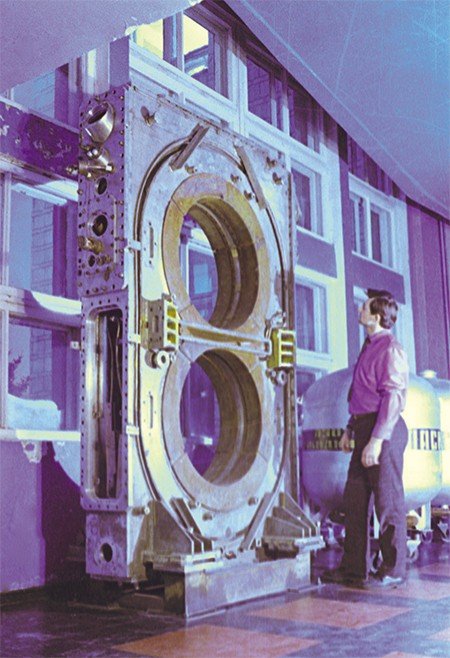 “When they formulated the idea of a controlled thermonuclear reactor,” recalls Prof. Igor N. Golovin, “Igor Vasilievich named four or five theorists who were to be engaged in this work, Budker among them. Since the autumn of 1950, all his thoughts had focused on a new problem. He would come regularly to the lab to see Kurchatov and then contemplate for hours in silence over sheets of paper, clean or filled with writing. A grave, secluded, almost monastic way of life. In the evenings, he would return to his Finnish house (he lived near the institute) and spent time planting flowers in the garden (this passion remained with him for life), together with his mother. His family was growing bigger; they were expecting the third child, and it was hard to live from his salary alone, which was 1700 (now 170) rubles.”
“When they formulated the idea of a controlled thermonuclear reactor,” recalls Prof. Igor N. Golovin, “Igor Vasilievich named four or five theorists who were to be engaged in this work, Budker among them. Since the autumn of 1950, all his thoughts had focused on a new problem. He would come regularly to the lab to see Kurchatov and then contemplate for hours in silence over sheets of paper, clean or filled with writing. A grave, secluded, almost monastic way of life. In the evenings, he would return to his Finnish house (he lived near the institute) and spent time planting flowers in the garden (this passion remained with him for life), together with his mother. His family was growing bigger; they were expecting the third child, and it was hard to live from his salary alone, which was 1700 (now 170) rubles.”
Budker proposed his own approach to the thermonuclear problem, contrived “magnetic plugs” to confine plasma and pioneered a new line in science. Golovin recalls that all those involved with thermonuclear research effused about the daringness of his ideas. <...>
However, Budker’s restless mind hustled further, from ordinary to relativistic plasma. In this gauzy, queer, unstable world of particles, rushing almost at the speed of light, he suddenly discerned something real, almost tangible. “I clearly saw in my formulas a bright shining ring. It could hang for hours motionless in vacuum. It appeared mystical,” Budker admitted, “and later I visualized with the same clarity the glow of colliding beams. We made them and saw—they really glow!”
“I remember a scientific seminar in Geneva, many years ago,” would later write a popular science author Vladimir Orlov, “...Out of the formulas scribbled with chalk on a brown blackboard, an object was arising, an imaginary one yet, generated by Budker’s scientific fantasy. I noticed how the US physicist Rabi, a Nobel Prize winner, recoiled and closed his eyes. He did see the ring, magically hanging in space, radiating a formidable glow.”
ACADEMICIAN DMITRY D. RYUTOV: BUDKER AND NUCLEAR FUSION Young researchers (me including) who came to plasma physics in the late 1950s and early 1960s were developing in an environment that put a solid priority on pure physics. Each day would bring dozens of fascinating problems relating to “collective” properties of plasma; new physical ideas arose; disputes boiled around plasma turbulence theory... Behind all these disputes, the effervescence of beautiful theories, the interpretations of subtle experiments, we seemed to have forgotten the ultimate goal of our work; we thought it almost indecent to talk about it...Observing these processes as if from the outside, Andrei Mikhailovich noticed, in the late 1960s, what appeared to elude from those involved directly in the works: the passion for pure plasma physics had gone too far, and the accumulated knowledge was enough for the plasmists to remember their duty. A chance to come out with this point of view presented itself at the conference of the International Atomic Energy Agency, held in Novosibirsk in the summer of 1968. In his speech at the closing of the conference, Andrei Mikhailovich said: “I think that the successes achieved by physicists in this field over the past years compel us to return to the idea of creating a thermonuclear reactor. A physicist should not start doing things only after he knows it all. To join the battle, he does not need to wait until the last button is sewn to the trench of the last soldier.”
Now, when we know how events developed further (nuclear fusion research did speed up at the turn of the 1960s–1970s), his speech seems natural and logical, but things were different back then, and many resisted him strongly. It took courage to say what Andrei Mikhailovich said.
In that speech, Budker raised another aspect of the issue. He said, “The problem of thermonuclear reaction is not an ordinary physical problem. This is a problem that should transform society and the world. Our generation, which has given people atomic energy and thermonuclear energy in an explosive form, is responsible to humanity for solving the main energy problem, i.e., getting energy from water. People are waiting for a solution to this problem. Our duty is to solve it in the lifetime of our generation, and therefore we must embark on this path.”
Budker called it a stabilized relativistic beam. Woven from electrons and ions rushing at near-light speeds, firmly welded together by their mutual attraction, this entity pulls itself into an elastic thread no thicker than a human hair.
If you loop this ethereal, weightless (less than a billionth of a gram!) particle flux, it will work like the powerful thousand-ton magnets of modern accelerators!
It is a challenge to collide particle beams, rushing towards each other like mad.Imagine two small archery shooters. One, Robin Hood, shoots from the Earth; the other, Wilhelm Tell, aims his arrow from a planet revolving around Sirius. They shoot their arrows simultaneously, and the latter must collide head to head.
A problem of about the same complexity was solved by Budker’s team, who managed to collide in the accelerator two particle beams flying towards each other at almost the speed of light... “When solving this problem,” said Budker, “the center of gravity moves from the Ministry of Finance to the shoulders of scientists. One scale pan carries the enormous cost of the powerful classical-type accelerators; the other one, the huge intellectual effort required to create facilities with colliding beams.” By him, the effort of scientists was always heavier
Researchers today are still dreaming of plasma with temperatures of a hundred million degrees. Yet that graceful structure created of relativistic matter—Budker’s beam—promised an ocean of energy.
The interest in the stabilized beam was so intense that Budker barely had time to present his results. At one such presentation, an embarrassing incident occurred, which Andrei Mikhailovich would remember all his life.
The aisles and windowsills were all crowded with excited youngsters. Closer to the speaker, prominent scholars were sitting, important people. One famous academician (he sat in the first row to hear the speaker better) kept questioning him about every little detail. At first, the speaker answered sensibly, to the point. But the stream of questions would not dry out. He got nervous, falling out of step. The questioner’s voice was overtaking him ruthlessly and methodically. And Budker lost his temper, “One man can ask more questions than a hundred wiseheads can answer!”
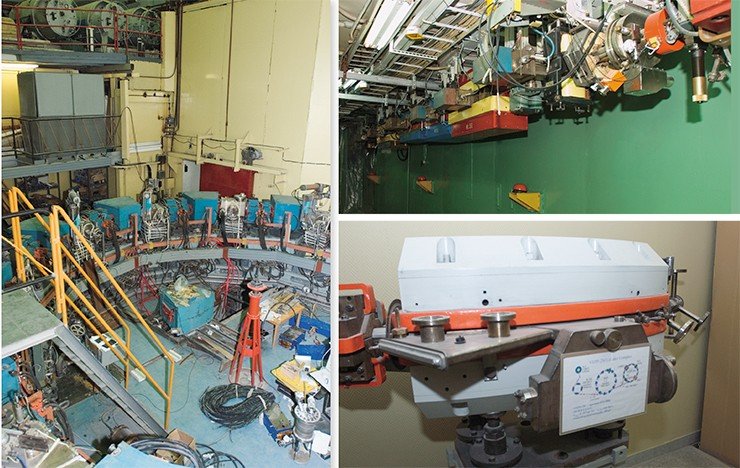
Back then, many laboratories tackled the problem of colliding beams, including in our country, but only two of them reached the finish line—successful experiments in electron–electron scattering—Stanford University and the Institute of Nuclear Physics (Novosibirsk), which had grown out of Budker’s laboratory.
However, that happened in 1965, when many years had passed, the hardest and, in my perception, the most troublesome years with our team maturing and making its way into the world. Bright ideas and most inventive and effective results went hand-in-hand with a fantastic discrepancy of our intentions and internal decisions with actual accomplishments both in time and in parameters...
Many of those who set off together with us despaired and left, especially when the work meant moving from Moscow, from the renowned Institute of Atomic Energy, to Novosibirsk, to a nonexistent, completely unguaranteed institute, given the above-mentioned glaring contradiction of intentions and decisions with results. I consider the fact that I withstood those challenges despite the doubts and temptations as one of my main moral achievements. Only starting from 1963, I felt that we had “reached the bottom” and could really cope with the tasks we had set for ourselves.
The audience froze in silence. Then someone in the back rows spluttered with laughter. Then another one…
Budker’s blood ran cold—he realized that he had offended the man: he remolded the well-known proverb about a fool.
The audience roared with laughter. The presiding Academician Artsimovich—his head raised haughtily, his face pale with anger—conveyed his apologies to the distinguished scholar: “You know how impudent Budker is...”
In twenty years, that theoretical work would be officially recognized as a discovery of a new phenomenon of nature.
“The average level in science is unstable,” Andrei Mikhailovich would argue, “If we do not proceed at the limits of our capabilities, we will get outrun and slide down. Unless we try our best to be the first, we will become a poor institute. Today, colliding beams are an achievement, but what about tomorrow? Today, we must be looking for an accelerator to be built by those who are just starting their way in science.”Many laboratories worldwide set out to implement the stabilized beam idea: the beam promised revolutionary changes in thermonuclear synthesis, in the problem of energy transfer over long distances, and in the development of accelerators.
“How many things are looked upon as quite impossible until they have been actually effected.” These words of Pliny the Elder seem to describe perfectly Budker’s work and life.
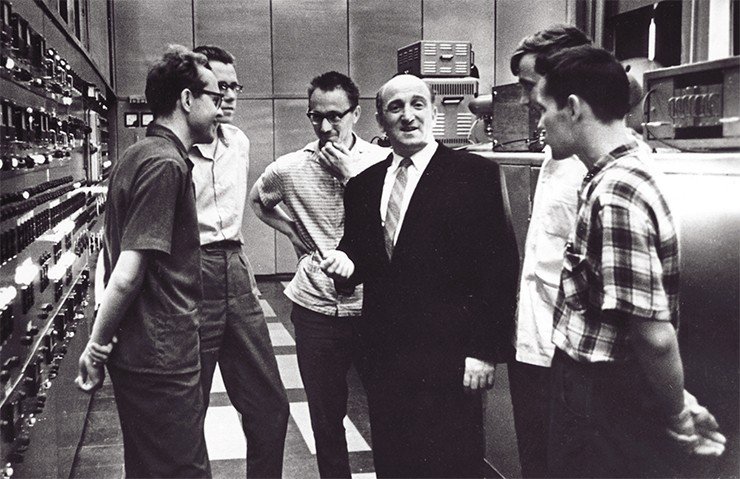
What distinguished him as a scientist? Was he a theorist or an experimenter? One of his students, Corresponding Member of the USSR Academy of Sciences, Veniamin A. Sidorov gave the following answer: “Budker was a true physicist. His narrow specialty was a fantasizer.”
CORRESPONDING MEMBER IOSIF B. KHRIPLOVICH: LESSONS OF KINDNESS Andrei Mikhailovich had preserved, until the end of his days, the remarkable wisdom of life and the rare gift of a physicist. And yet I recall him not as a gray-bearded man, already marked by a serious illness, as depicted in photographs of recent years. I remember a robust, sturdy man, breathing confidence and energy—the way I first saw Andrei Mikhailovich in the summer of 1959 in Kiev at the Conference on High Energy Physics. I saw him and immediately guessed (he did not wear a nameplate) that he was the Budker whom I had heard so much about...Andrei Mikhailovich was always fascinated by huge, challenging problems: the stabilized beam, thermonuclear fusion, colliding beams, electron cooling. Not all the problems surrendered to him, but one thing appears to be beyond doubt: if anyone had been capable of solving those problems under those conditions, it was by no means those sober-thinking skeptics who had repeatedly (and sometimes not without reason) criticized Andrei Mikhailovich—it was only enthusiasts like Budker who could have done it.
I often recall the words that he said: “A problem has many wrong solutions but only a single correct one. You can find it only if you really want to solve the problem.”
Budker was remarkably cheerful: “The optimist lives a better life. He rejoices twice: when he conceives a project and when it works out, and a pessimist, at best, only once—if his project succeeds.” A bit of naive pride: “I know only one kind of thievery in science. That’s when they steal from me.” An uncompromising attitude to any formalism: “Evaluation of scientific activity cannot be formalized. As soon as a new formal criterion appears, so does a way to elude it.” “The theorist’s profession does not boil down to adding and multiplying.” A contemptuous opinion on one of the theorists: “A circus dog-mathematician.” Once he saw on our blackboard the words said by Steklov: “Intuition goes on top of all logic.” He was delighted yet remarked, “You do not understand how true this is.”
Andrei Mikhailovich was sometimes very harsh, but one could respond to him in the same way—it didn’t wake up the boss in him. Sometimes, he got offended like a child, but “never to revenge” was one of his rules. And not only towards his enemy in a verbal skirmish.
I must admit that when I became a postgraduate student of Budker in 1959, our relationship was far from cloudless. I did not have much enthusiasm in the accelerator problems that Andrei Mikhailovich set for me; I was attracted to another field of physics. Budker’s reaction to the lack of zeal (or enthusiasm) was sometimes stormy. Only many years later, when I had my own postgraduate students, I was able to appreciate the tolerance with which Andrei Mikhailovich treated me, a stubborn youth...
However, it is not only Budker’s bright personality that explains the fact that he managed to create a large and immensely strong scientific team. There was another reason for success: he believed it absolutely necessary to raise and develop what could conditionally be called the “spirit of the institute.” Andrei Mikhailovich was a real leader: decisive, assertive, and at times tough. However, even when he had made a decision, he did not spare time and energy to convince the staff and the academic council that his decision was right and usually succeeded. However, it also happened that Andrei Mikhailovich changed his decision after considering the opinion of the staff. As a result, we did not just think about pressing issues; we developed a feeling that we actually decided the fate of the institute.
Maybe, it is not a coincidence that many INP students became leaders of large scientific organizations in various fields, which is a subject of the half-joking, half-serious pride of the institute.
He attached great importance to intuition, this logic of feelings.
“People often think,” said Andrei Mikhailovich, “that science is a chain of rigorous proof. But this proof appears only when experiments are finished. Their results are written in the form of concise conclusions. The scientific process as such is never formal; it is always creative. I often advise my students, ‘Listen to what artists say and how they say it. Learn from them’.”
“Budker sensed physics not as a series of formulas or a historical sequence of discoveries,” Academician Rem Soloukhin said to me once, “but as an artist who is mixing paints. It was an element that words fail to explain...”
“He had always disdained attempts to return to the ‘good old days’ of classical physics. Instead, he managed to develop his imagination to such an extent that the theory of relativity and quantum mechanics, which he perceived subtly and deeply, became not only comprehensible for him but natural and visually compelling; they became theories he could work with,” says an article dedicated to the 60th anniversary of Budker’s birth, which was published in the journal Uspekhi fizicheskikh nauk. Its authors were Academician Anatoly P. Aleksandrov and other physicists. <...>
Perspective three. With the team…
When they decided to open a new laboratory at the Institute of Atomic Energy to develop facilities with the stabilized beam, a critical issue came to the fore: Who should be its leader?
“A true scientific team,” says Academician Alexander N. Skrinsky, Budker’s successor, “is where the individual identity of each researcher develops and manifests itself most clearly. For Andrei Mikhailovich, there was no crowd. He saw and understood everyone individually. And he could find and awaken the best in everyone.“Where moral principles lie at the heart of the team, a scientific school usually arises. The success of the Novosibirsk school of physicists largely owes itself to the moral climate”
How did it happen that Budker, a pure theorist, decided to head a group of experimenters and engineers? Did he understand that he was about to take the most crucial step in his life? Almost everyone, including his close friends, looked at this idea as another Budker’s extravagance.
“Many did not understand Kurchatov,” recalls Golovin, “how could he appoint as head of a scientific team a person with zero organizational experience, and such a peculiar one?” This eccentric wandered through the corridors of the institute and pestered everyone, talking about a “pocket” accelerator, which had to fit on the table, then about the architecture of modern “temples of science,” or that a tight-knit volleyball team should play on the spiker (he was the captain of the institute’s team), or he suddenly became infatuated with the legendary knights of King Arthur and their round table...”
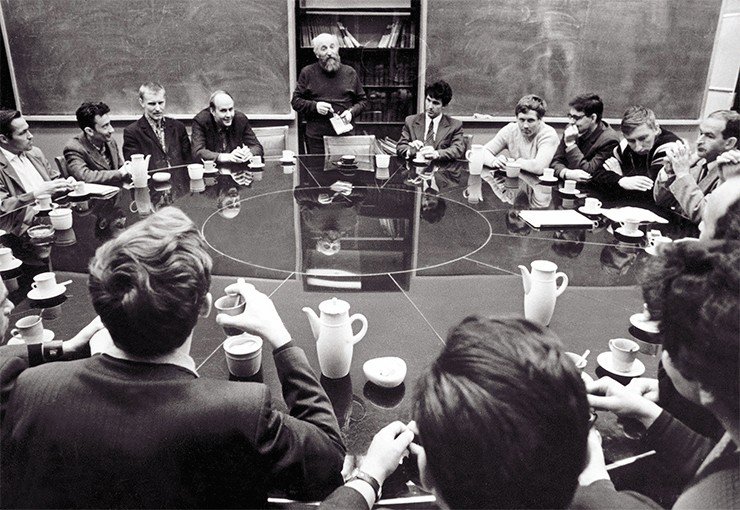
To back up their opinion that Budker could by no means be appointed as head of the team, they brought forward various arguments, even ridiculous ones. One highly reputable scholar shared that he had asked Budker to help him rent a summer cottage dacha, but he had been of no use whatsoever… And in any case, how can a man who cannot hammer a nail stand at the head of experimenters?!
DR. SCI. (PHYS.–MATH.) ALEXEY P. ONUCHIN: FIGHT BUREAUTS Andrei Mikhailovich saw the strength of the Round Table in that the institute had created the conditions whereby the most complicated issues were discussed publicly. Anyway, it is the director who makes the decision. But in the absence of the Round Table, he receives information in conversations with individual employees or from the administration. In this case, information is largely distorted by whether the employees behave actively or passively. “Active” employees are especially hazardous because they will not only visit the director themselves but also wise up other employees to call on the director “accidentally” and influence his opinion.Andrei Mikhailovich had always fought to ensure that the institute’s support services were minimal. They should do only what is vital for physicists. The personnel department, the accounting department, the office, the scientific secretary’s administration—if they grow too big, they will create such a system of accounting, control, reception hours, etc., that is, such bureaucracy that the physicist will no longer feel himself the main person in his institute and will waste a lot of time. In our institute, to this day, the planning and economic department consists of one person only, and issuing a guest pass to the institute only requires one to call the head of the laboratory.
But Kurchatov was farther-sighted...
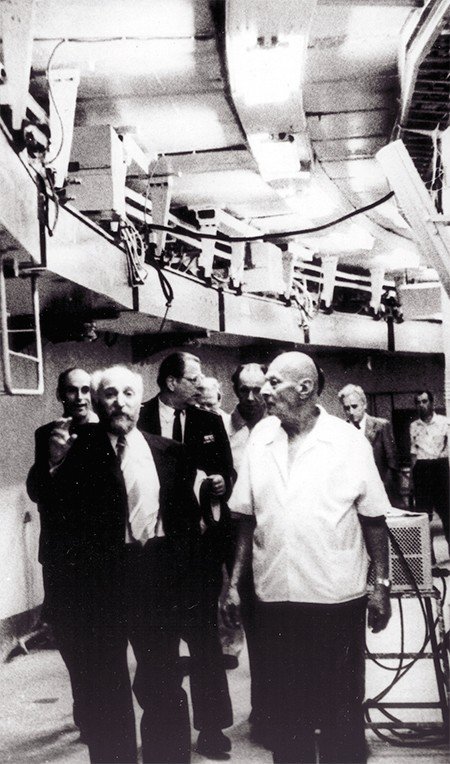 “Budker’s dashing ascent polarized the public opinion among physicists,” recalls Academician Yakov Zeldovich, “some people spoke of him as a bright and talented person; others called him an air-monger or even a provincial impudent: ‘It’s easy to write formulas, but can you do what we do?’.
“Budker’s dashing ascent polarized the public opinion among physicists,” recalls Academician Yakov Zeldovich, “some people spoke of him as a bright and talented person; others called him an air-monger or even a provincial impudent: ‘It’s easy to write formulas, but can you do what we do?’.
“A vivid memory: I am talking about Budker with two highly respectable academicians from LIPAN (Laboratory of Measuring Instruments, the name of the Institute of Atomic Energy at that time). The academicians hold opposing points of view. For ten minutes, I had to (literally) grip one of them, who was weaker physically, by the hands so that the dispute would not turn into a vulgar fight. It was not verbal arguments that settled the dispute. It was the creation of the Institute of Nuclear Physics in Novosibirsk.”
“I immediately agreed to Igor Vasilievich’s suggestion about working in Siberia,” recalled Budker, “although he advised me to think about it until morning. Five minutes was enough for me. I have long wanted to leave the capital and start a big project without the shackles of academic traditions and prejudices. It is so important and so difficult to free your psychics from this burden. As a child, my grandmother made me learn the Old Testament. It etched in my memory: Moses had been leading his people through the Sinai desert for forty years. When I grew up and looked at the map, I saw that that desert was a tiny spot; there was nowhere and no need to wander across it for forty years. It took these years for the prophet to erase the spirit of slavery from the people so that the generation of slaves would die out...”
Cand. Sci. (Phys.–Math.) V. I. Kogan: “A. M. knew well the price of bureaucracy. He would often say that if one had removed all the bureaucrats from office, even by resettling them all to the Black Sea coast with full remuneration at public expense, this only move would have brought incalculable benefits for the national economy and science”The “act of creation” of the Institute of Nuclear Physics began with declaring the cult of the scientist. The scientist was the main figure, Budker believed, the center of the universe. All the services, the entire administrative body, including the director himself, had to turn their face to the researcher. The first pillar of the institute was science. The second one was mobile production facilities, able to quickly implement any technical idea, even a most audacious one.
Many wondered: What is this for in an academic institution?
“They often tell us we are working in a new way,” Budker retorted, “in fact, we’ve returned to the good old days, when physicists made their equipment themselves.”
He explained: “Our principle is not to repeat the works of others. We reject the race after the leader. The only way to compete is the rivalry of fresh ideas.”
His friends laughed: Budker’s inventiveness knows no limits—he’s got gray hair on his temples yet managed to grow a red beard after the heart attack. But seriously speaking, perhaps, Budker’s most effective invention was his round table—a tool that made it possible to build, from ordinary people, one of the most extraordinary creative teams.
When Andrei Mikhailovich suggested that the academic council should meet every day and together tackle all the issues of the institute, this idea did not arouse enthusiasm in most of the staff. It seemed wasteful to take time off work for daily meetings and discussions. Budker neither insisted nor pressured. He said, “Let those come whoever wants to. Let’s try. If we do not like it, we’ll just cancel.” But he knew for sure: they will like it!
Budker did his thinking out loud. He loved to and knew how to do it. His partners in conversation inspired him for brilliant improvisations. His students, who constantly teased him, would call this way of working “Socrates’ talks.” He brought his most exciting ideas to the round table. The idea would roll across its black mirror surface, like a ball,—one could view it from all the aspects. Here it got honed and polished, acquiring its complete form. Today, researchers at the institute seem to believe that the large round table covered with black plastic has always stood in the hall of the academic council. They cannot imagine their lives without it.
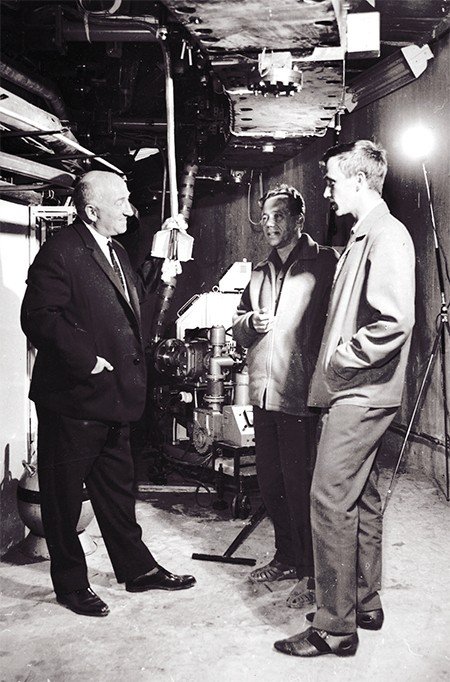 “It is scientists who do science, and they know better how to do it and how to organize,” said Budker, “from the experience of my teacher Igor Vasilievich Kurchatov, I learned the most important lesson: the success of the atomic problem in our country was decisively due to the fact that there was an outstanding nuclear physicist among the organizers of this huge project and a brilliant organizer among nuclear physicists...”
“It is scientists who do science, and they know better how to do it and how to organize,” said Budker, “from the experience of my teacher Igor Vasilievich Kurchatov, I learned the most important lesson: the success of the atomic problem in our country was decisively due to the fact that there was an outstanding nuclear physicist among the organizers of this huge project and a brilliant organizer among nuclear physicists...”
Kurchatov insisted that administrative personnel, people who were supposedly far from science, should be invited to scientific meetings. At first, many looked at that as a waste of time. But then it became clear: Kurchatov taught people to quickly understand each other. When people speak a common language, things are moving much quicker, without fuss, like on rails without joints.
The round table was a place to discuss the projects of new facilities and experiments at those facilities, orders to production workshops and assignment of housing for scientists, political news and theatrical premieres. Everything that made up the life of the institute and its people. There were no unimportant matters.
Sometimes the discussions dragged on, causing frustration. But if a decision was taken, it was taken unanimously. Everyone followed it. The round table was a place to work out a common point of view.
The very fact that the institute had such an informal body where all problems could be solved gave the main impetus for building a real scientific team. It was a school of partnership. Here brotherhood was born...
Andrei Mikhailovich said, “There are many paths in science, and the only path that surely won’t work is the one that others have already walked through. Good science is always about discovery.”“Sometimes it is better not to know what was done before you, so as not to go astray onto a beaten track leading to a dead end.”
“When you try to think out something by yourself, then chances are high that you will not think out anything. But when you live by others’ thinking, you certainly will not do anything. Never do what others do. It is one hundred percent doomed to failure.”
“A physicist does not have to start doing something only when he knows everything about the problem,” said Budker, “to achieve your destination, you have to set off. One can object to this: How can you start if you have no new ideas? But ideas will inevitably appear in the process of work.” And he again repeated his favorite aphorism about the sophist who would not go near water until he had learned how to swim
He would always reiterate that it is scientists that should lead a creative scientific team. Their opinion is decisive. It is vital that the director and other departments of the institute got to know this opinion in direct informal communication rather than from reports, resolutions, and presentations. Science and bureaucracy are incompatible!
“If the administration turns its face to the director, it’s easy to guess that it will turn its back on everyone else,” Budker explained jokingly, “and who are those ‘else’? Scientists, researchers—the main people in the scientific community!”
Therefore, he placed between himself and the administration the supreme power in the institute, namely, the council of leading researchers. The administration was put into the position where it turned its face to the council. <...>
Budker kept saying that “the system of petty micromanagement is deadly for science; this is the same as if you invite an artist to paint your portrait and then take him by the hand and lead his hand across the canvas with yours.”
The windows in the INP building were lit all night long.
When the researchers’ wives complained about the catastrophic busyness of their husbands, Budker consoled them: “Remember: you’re wives of seamen. And lucky you are that the institute is the only port where they enter...”
In an interview to a reporter from the newspaper Literaturnaya gazeta, Budker depicted his understanding of how one should lead a team of scientists and of the leader’s role:
“Once I thought that a good leader, like a good chess player, thinks a great many moves ahead, and here lies their strength. However, it turns out that both in chess and in science, the main thing is to create winning positions. This relates to personnel, morale, material support of research, and so on. If you choose and appoint people correctly and they strive towards mutual cooperation in the interests of a common project and even, in a sense, towards love, this great force that transforms the world not only in everyday human relations but also in science, if you remove everything that interferes with normal relations, strengthen the team financially and correctly formulate the subject of research, results will work out by themselves.
“Of course, when the time comes to capitalize on these winning positions, then, like in chess, you need to devise smart combinations and think several moves ahead, but, as they say, even a computer can do it.
“Life is not chess; positions here are much more complicated. In chess, intelligence is the only thing you need; in life, you need much more: goodwill, leader’s charisma, personal influence.
“When you look from the outside at the work of a research team, you see only these last combinations, the final moves, but everything else—what matters most, that is, the process of creating the positions remains invisible. I have seen it many times: a new leader comes to a good project, but that person is capable only of comprehending, formally and logically, the last effective moves. He starts with obtaining results rather than strengthening and expanding the main positions. And the team inevitably becomes less productive.
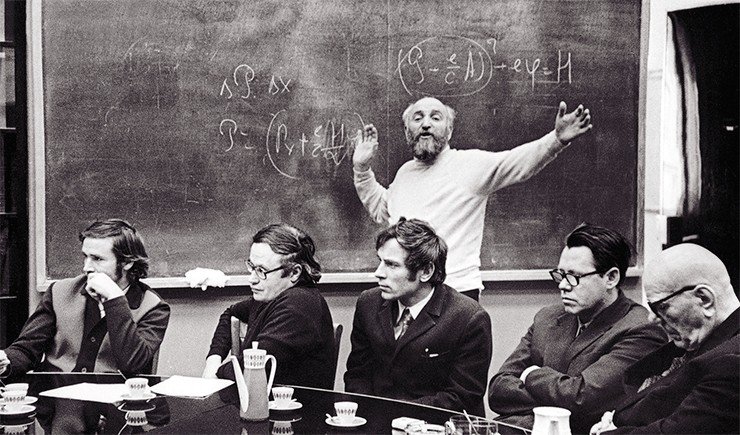
“Therefore, at any given time, a leader should make sure that their winning positions revive and expand, and here lies the leader’s wisdom and the team’s strength.
“Of course, it is the talent of individual scientists that plays the key role in creating the positions. Ultimately, science resembles football: everyone plays, but only one player scores a goal. In science, it is loners who score goals. However, unless there is a well-built team, these loners will not score their goals. Everything matters, both material support and the team’s structure, but what matter most is what unites the team into a single whole.”
Perspective four. With the future…
A thought to which he returned upon many occasions: “In terms of concordance with the spirit of the times, all great discoveries and achievements fall into timely, belated, or premature.”
By comparing the time of the discovery with the capabilities of that period, one can find out whether it matches the level of science and technology.
An example of a timely achievement is space exploration.
Psychologically, mankind has long been prepared for it, largely through science fiction novels: even those written in the last century would describe space flights in detail. The views of science fiction authors were supported by serious scientific forecasts. The origins of rocket technology, as is known, go down into deep antiquity. The Chinese made powder rockets for fireworks as early as in the 10th century; later, rockets appeared in Europe and Russia. Those were, at first, signal and artillery rockets, then guided projectiles and jet aircraft, modern ballistic missiles and super-powered space rockets and, finally, satellites—such is the path of their development. Being prepared technologically and psychologically, mankind has been moving step by step into space. This is an example of a great timely achievement <...>
An example of a premature discovery is atomic energy.
Shortly before discovering nuclear fission of uranium, i. e., before discovering the possibility of utilizing atomic energy, Academician Abram F. Ioffe, an extraordinarily progressive scientist, a dreamer rather than a skeptic, had argued that the time for practical use of atomic energy would come only a century later.
The society was completely unprepared psychologically for utilizing the capabilities of atomic energy. Even the science fiction novels of the preatomic era hardly give a hint to the idea of utilizing atomic energy and, generally, the internal energy of matter. Science was not ready either: no theory of atomic nucleus existed; by the way, no theory of nuclear forces has been proposed yet. But atomic energy was born anyway. This premature birth was caused by World War II. Evidence that this process was essentially unnatural also comes from the costs of solving scientific problems associated with obtaining atomic energy: for the first time in the history of science, they were on par with the national income of the most developed countries! Although back then the society did not actually feel the need for atomic energy. Only now the time of certain maturity has come; only now mankind has become capable of dealing with this issue. Atomic energy came into being a few decades earlier than it was supposed to, but the child was born, survived and began to grow up by leaps and bounds.
Academician Roald Z. Sagdeev: “Once I was asked to open a conference of junior scientists (they include researchers under 33 years of age) and address them with a valediction. I immediately remembered Budker’s attitude to the idea of junior scientist: “I can be accused of anything, but not of oppressing the youth,” joked Andrei Mikhailovich. His institute was where the youngest academicians worked; the average age of members of the academic council was 30 years. Twenty- and thirty-year-old researchers defended doctoral dissertations...“In my opening address at the conference, I told our youth that more than twenty years ago, at about their age, I had come, bursting with enthusiasm, to Andrei Mikhailovich—as a representative of the newly created Council of Junior Scientists with the Siberian Branch of the Academy. Budker looked at me closely and said, ‘Scientists fall not into juniors and seniors but into smart ones and fools!’”
Atomic research has long paid itself off, both scientifically and economically. Moreover, this discovery jump-started the pace of scientific development and revolutionized all other areas of knowledge. It also brought about significant advances in technology.
Never before has mankind faced challenges comparable in magnitude to the atomic problem. Anyway, if it has, it retreated in the face of the complex body of issues, when it is unclear what the order and hierarchy is; what to focus on first and what to finance; how to put together the results; and who should have the last word in projects worth billions.
However, it is the experience gained through solving the atomic problem, as well as its revolutionizing impacts—organizational, psychological and technological—on all areas of science, that facilitated the subsequent advances in space exploration, in laser technology and in many other areas...
“Historical experience shows,” said Budker in an interview to the newspaper Nedelya, “that scientific development is about lifting bans. There was a ban on the very idea of atomic fission. Yet atom proved to be fissible. It was believed that man cannot get off the Earth. We did. A law existed: the mass of products before a reaction is equal to the mass of products after it. Nothing of the kind. If science cannot lift a ban, it shows a way around it. So, you can expect the impossible to become possible.” <...>
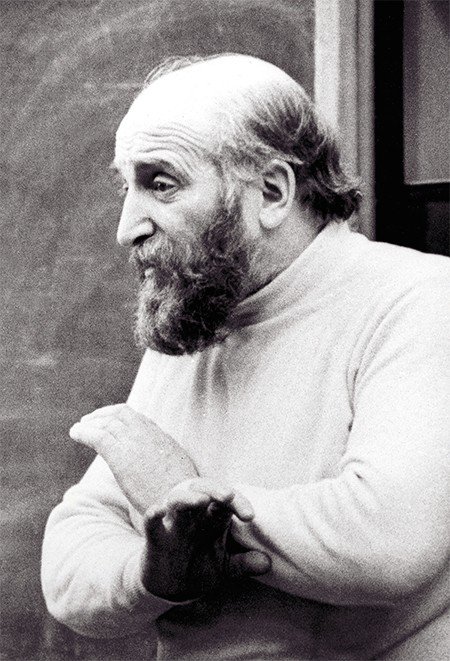 His thought worked at the boundary between dream and science fiction, and it had a remarkable take-off power. Nevertheless, easily leaving the Earth, his thought always took off from our planet and came back to it. He dreamed of space and even tried to talk Sergei Korolev into assigning him as part of the crew on a mission to the Moon.
His thought worked at the boundary between dream and science fiction, and it had a remarkable take-off power. Nevertheless, easily leaving the Earth, his thought always took off from our planet and came back to it. He dreamed of space and even tried to talk Sergei Korolev into assigning him as part of the crew on a mission to the Moon.
When he fell ill, he would fly away from the Earth in his dreams more and more often. Sadly yet hopefully, he would ask, “There, in medicine—how soon will they start treating the heart with weightlessness?” He wanted to offer himself to physicians so that they could conduct experiments on him.
“For spaceflights to distant stars outside the Solar System,” said Budker, “nuclear fuel won’t work. Antimatter is the only source of energy known today that allows one to develop a speed close to the speed of light. Then, mankind will expand over distances so large that even signals traveling at the speed of light will come only after generations. It’s dreadful to even think about such disunity, especially for people of our days, who have virtually no distances between them! Science says: you cannot move faster than light. But physicists of the future may teach people how to move from one point to another in less time than light. Then the whole Universe will open itself to mankind. However, this is not a forecast based on modern science but a dream: science fiction, fairy tales of our time...”
Autumn. A weekend day. For hours he strides back and forth along a path in the woods, breathing in the smells of cooling earth. Today is his day off. But he is still at work—if not at the institute, then at least here, in the woods, in the air, in motion. His partners in conversation change every two to three hours; nobody can stand these talks longer. They discuss thermonuclear fusion, electron cooling, industrial accelerators, high energy physics. His interlocutors come and go.
Budker—one for all.
In front of his house, a cedar grows, the one he planted that year when he moved to Siberia. Andrei Mikhailovich brings his yet another interlocutor to the cedar, insisting he should touch its long green needles. He is happy and proud: the cedar has still a long life ahead.
But he himself will not see the next autumn...
* Translator’s note: In USSR rubles of 1988; in today’s money, Budker’s scholarship would amount roughly to $30 per month
References
Akademik G. I. Budker. Ocherki. Vospominaniya (Academician G. I. Budker. Essays. Memoirs), A. N. Skrinsky, Ed., Siberian Branch, USSR Academy of Sciences, Novosibirsk: Nauka, 1988 [in Russian].
Belyaev S. T., Sidorov V. A., and Chirikov B. V. Gersh Itskovich Budker (in honor of his 50th birthday) // Sov. Phys. Usp. 1968. N. 3. V. 96. P. 569—571.
Ibragimova Z. M., Zolotaya dolina Sibiri (The Golden Valley of Siberia), Novosibirsk: Zap.-Sib. Knizh. Izd., 1982 [in Russian].
Melik-Pashaeva A. A., Budker in Four Perspectives // Puti v neznaemoe. Pisateli rasskazyvayut o nauke (Roads to the Unknown. Writers Tell Us about Science), Moscow: Sovetskii Pisatel’. 1988. V. 21. P. 282—319 [in Russian].
Skrinsky A. N., Knights of the Round Table // SCIENCE First Hand. 2006. N. 2. V. 7. P. 26—37
Skrinsky A. N. BINP grew in a forest, like a mushroom // SCIENCE First Hand. 2018. N. 1. Special Issue. P. 22—35.
The article uses materials from the photo archive of the Institute of Nuclear Physics, SB RAS.


